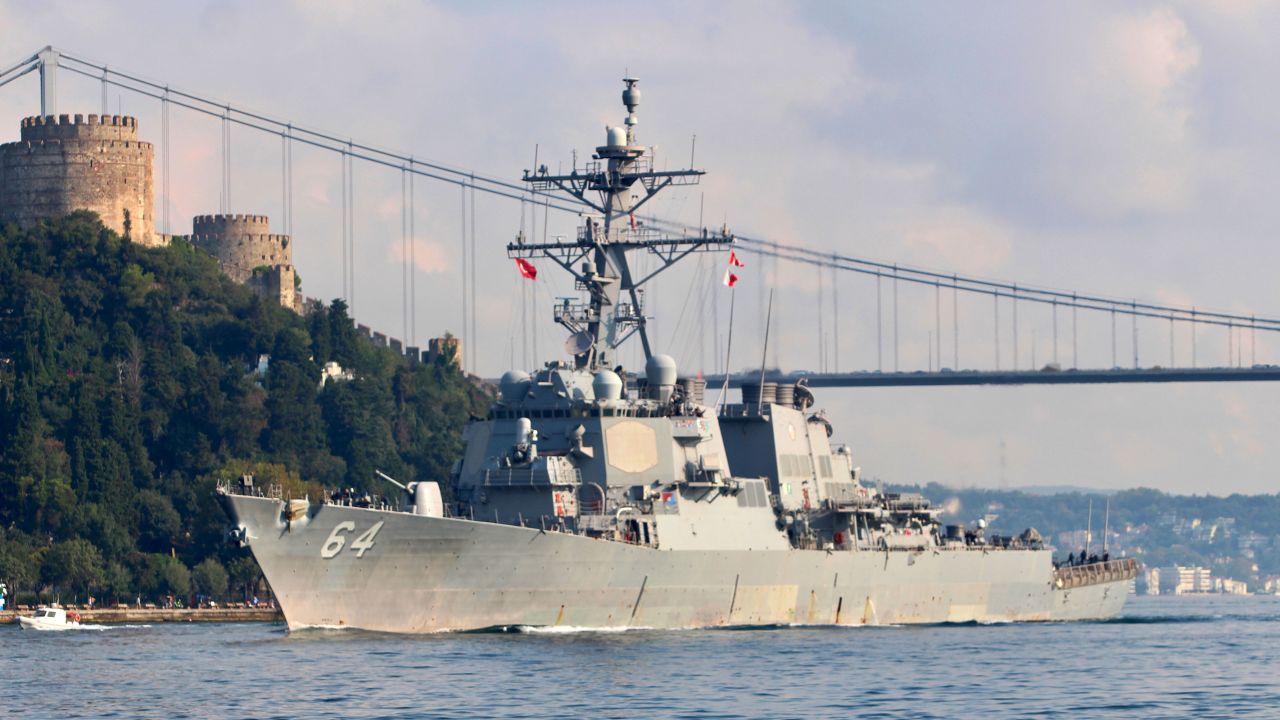The USS Carney Encounter in the Red Sea: A New Era of Naval Warfare

Photo source: AFP
In an era where naval warfare is increasingly involving high-technology and unmanned systems, the recent engagement of the USS Carney in the Red Sea brings a stark reminder to the forefront of military strategy discussions around the globe. On its journey from the Suez Canal towards the Gulf of Aden, the Arleigh Burke class destroyer was confronted by a threat that until now had remained largely theoretical – a barrage of cruise missiles and drones. The USS Carney, a formidable warship boasting the Navy’s advanced Aegis combat system, had left the Suez Canal just the day before this encounter. Its mission was to rendezvous with US amphibious ships, the Bataan and Carter Hall, in the Gulf of Aden, and escort them to join a task group currently being assembled in the Eastern Mediterranean. As she sailed southwards, the previously known missile threat in the region became a horrifying reality. The Red Sea, a strategic maritime route, has been a known flashpoint for potential threats due to its proximity to several volatile regions. This reality has been dramatically underlined by the sudden and unexpected attack on the USS Carney. The incident underscores the changing dynamics of naval warfare, with the introduction of small, cheap, and effective unmanned aerial systems (UAS) and cruise missiles that can significantly stress even the most advanced naval defenses. The USS Carney, although equipped with some of the most sophisticated defensive systems in the world, would have faced a situation of intense pressure. Each cruise missile and drone represents a different threat vector, requiring a different response. Despite the advanced radar systems and anti-missile defenses onboard, engaging multiple fast, low-flying objects simultaneously is an immense challenge.
The Aegis system, which is designed to track and destroy multiple advanced threats such as ballistic missiles, performed admirably under the circumstances. The successful interception of the incoming missiles and drones is a testament not only to the advanced technology aboard the vessel but also to the training and readiness of the crew. However, it’s crucial to note that the incident also highlights the increasingly asymmetric nature of modern warfare. The deployment of inexpensive drones and cruise missiles can pose a significant risk to even the most technologically advanced and expensive naval vessels. This asymmetry is a growing challenge for naval forces around the world, requiring a shift in defense strategies, tactics, and equipment. As the USS Carney continues its mission and the US Navy assesses the implications of this engagement, it is clear that this incident will have far-reaching implications. It will potentially influence the development of naval strategy and future ship design, with a greater emphasis on multi-threat environments and the increasing role of unmanned systems. The incident also highlights the importance of international cooperation and regulations regarding the use of drones and missiles. As technology advances, so too does the potential for its misuse. The international community must work together to ensure that these technologies are used responsibly and that potential threats are adequately addressed. The engagement of the USS Carney in the Red Sea marks a significant moment in naval warfare. It underscores the evolving threats that naval vessels face, the importance of advanced defense systems, and the need for continued adaptation and preparation in the face of a changing battlefield. As the USS Carney’s encounter shows, the missile threat known about in that area for some time has now become all too real. The incident serves as a dire reminder that the future of naval warfare.
By Paul Bumman

















